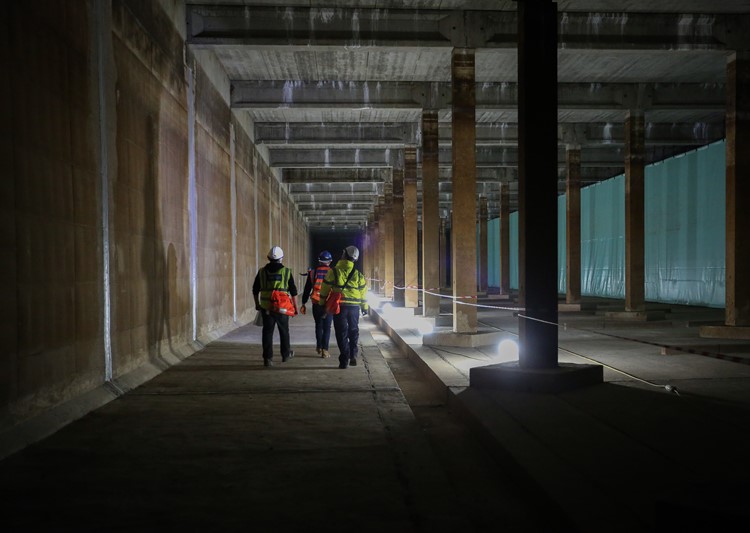INTERNAL & EXTERNAL RESERVOIR REFURBISHMENT
Stonbury completed refurbishment works to extend the life of a 40ML underground service reservoir which indicated signs of severe ingress from rainwater.
The scope involved the complete excavation of the roof and the top screed layer, to expose the roof joints where the sealant had deteriorated. This was carried out by hand to avoid the potential contamination from diesel-powered equipment on the roofs of clean water reservoirs.
Following preparation of the roof joints, an epoxy resin adhesive was applied using brushes, followed by the installation of waterproofing bandage. Subsequently, flood testing highlighted water ingress in previously dry areas, which significantly increased the area of repair. The external repairs were completed with the application of liquid plastic, to encapsulate the reinstated joints.
Internally, the repairs required critical temperature and humidity control while applying and curing the DWI Regulation 31 materials. This is usually achieved by running large diesel-fueled generators to provide power for environmental control. However, this can be noisy, inefficient and at odds with the client’s ambitions to reduce their carbon footprint.
The scope 1, CO2 emissions from using generators would be significant to provide enough heat, light and dehumidification for the scheme. So, in discussion with the client, the installation of a permanent, three-phase power supply to the valve house adjacent to the reservoir, was proposed. By challenging the standard solution of using temporary power, and with permission from the client, a £50k saving was achieved on the scheme. In addition, permanent power offered the following benefits:
• Able to use renewable energy from the client’s preferred supplier
• Lower greenhouse gas emissions
• Reduced pollution risk
• No requirement for fuel deliveries
• No requirement for monitoring the generators out of hours
• Increased reliability
• No noise pollution
• Power supply available for future use
Inside the reservoir, surface preparation was carried out on the walls and soffit and pull-off tests were conducted to ensure sufficient adhesion to the substrate. Epoxy resin and waterproofing bandage were then applied to the internal wall joints, beam ends and areas along the roof. Detailed application and curing records were maintained throughout, and data-logging equipment recorded the exact temperature within the tank.
The information was downloaded and passed to the client as a record of compliance with the manufacturer’s Instructions for Use (IFU) along with other quality assurance records that form part of the Stonbury quality, testing and inspection plan (QTIP).
The scope also included the removal of the existing handrail and baffle curtain, which was made up of plastic corrugated sheeting and fixed into place on a badly corroded steel frame. A new thermoplastic curtain was installed, along with a new stainless-steel handrail to ensure safe access and egress for future maintenance and testing.
On completion of the refurbishment works, an inundation test was successfully carried out, and a final inspection was completed with the client.
The project team received extremely positive feedback from the client, who was delighted with the repairs to extend the service life of the structure and the installation of a permanent power supply.


